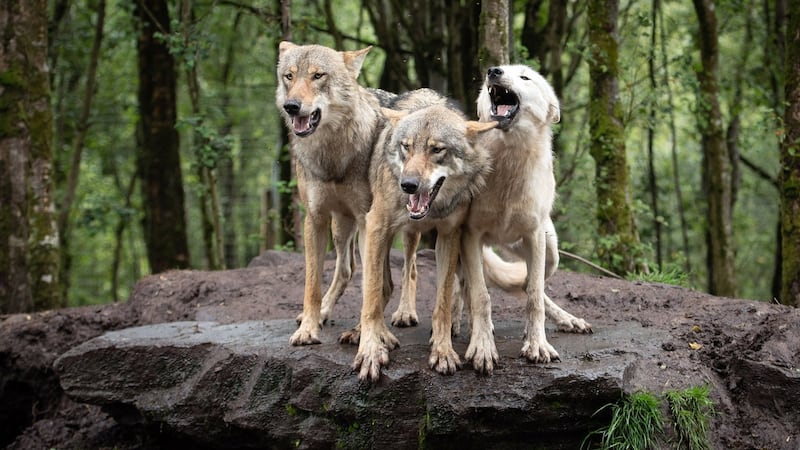
Two years ago I was taken back in time. It was my first encounter with Katherine Rundell’s natural history studies in the London Review of Books. The piece was called “Consider the Greenland Shark”, and it began by placing me in the Jacobean era, when, conceivably, a Greenland shark that survived into our lifetime might already have lived a century of its own: the longest-lived vertebrate on earth.
The Golden Mole: And Other Living Treasure, which collects these pieces along with a few additions, can be read as a sort of modern bestiary. There is a very real risk that, if we are not ambitiously careful, some of these creatures – the Borneo elephant, the sun bear, the bumblebee bat, the Hawaiian crow – will soon become myths themselves. Rundell, who is John Donne’s award-winning biographer and a best-selling children’s author, explores misunderstandings that pervaded about certain creatures from ancient times onwards, and which may have done serious harm to the animals they celebrated. Narwhals were thought to be sea unicorns; their long, sensitive teeth were collected for supposedly magical properties. Giraffes were coveted as composites of other animals, like griffons. Rare seahorses are still dried and eaten for mythic value. Wolves get a bad deal: “the very first transformation scene in the work of the Roman poet Ovid is also the grisliest, and one of the earliest fictional accounts of lycanthropy”.

Rundell shows us that the human imagination often looks pedestrian next to nature’s real ingenuity; our fairytales can seem like mundane placeholders for more wonderful truths. It was once proposed that storks “wintered on the moon”; we couldn’t have imagined that a mere two centuries later their wings would reveal the key to human fight. No Roman naturalist or German scholastic would have dared suggest swifts fly the equivalent of five times round the Earth every year. The US Navy models underwater missiles on the body shape of bluefin tuna. But biotech is yet to emulate the properties of the golden orb spider’s web, which can last years.
The titular golden mole is blind and can’t see its own iridescent fur. But with gilt-edged pages and illustrations by Talya Baldwin, Rundell’s book presents the wonderful things it contains with the tactile attractiveness of a children’s book. Her own literary imagination, too, is sharp and distinctive. The eyes of one hermit crab are on stalks “striped like a barber’s pole in red and white”. Bears who hibernate “unfurl a powerful slowness within themselves”. A pangolin has the face “of an unusually polite academic”.
READ MORE
[ Another Life: A head start to save our threatened birds?Opens in new window ]
Rundell’s selection is rangy and personalised. There’s bound to be animals one feels to have been unfairly overlooked, and I would have liked to see her on at least one bird of prey, or declining beetle, or endangered cat. The Bengal tiger would have been too much to ask: a whole book would be required to explore the references and resonances that accompany it. The lynx, though, is secretive and mysterious enough not to have already exhausted our cultural imaginations, and could fit snugly into one of these short entries. Some animals that would have most brilliantly galvanised Rundell in the telling and fit well into her format, rich as they are in folklore, misunderstanding and wild factoids, are doing just fine. The spotted hyena, much maligned and endlessly fascinating in terms of legend and science, by and large doesn’t need the help of a book like this. Rundell’s latest LRB piece has been published this month, and is on hummingbirds. As it’s not included here, maybe there’s a second edition of this golden treasury being planned.

We’ve always been attracted by animals’ rarity, whether we’ve expressed our attraction as curiosity for its own sake or the collector’s impulse to keep and own. Rundell quotes Pliny the Elder: “the proof of wealth is ‘to possess something that might be absolutely destroyed in a moment.’” Reading Rundell’s book, you know the feeling. I googled the endangered Gooty tarantula, which is an otherworldly ultramarine, and immediately thought: want one. In terms of consumption, human-created scarcity often increases demand – pangolin scales, bluefin tuna flesh – rather than curtailing it. We “whittle away at their numbers with our delight”, Rundell writes.
There is always hope of a sort. As I read The Golden Mole, I also read of species new to science being discovered. Not just the Principe scops-owl, native to a West African island with a human population of less than 8,000, but a new type of water shrew in the British Isles. But also at the time of writing, world leaders were meeting in Egypt for Cop27. Their decisions will directly affect our chances of continuing to discover more of this treasure.














